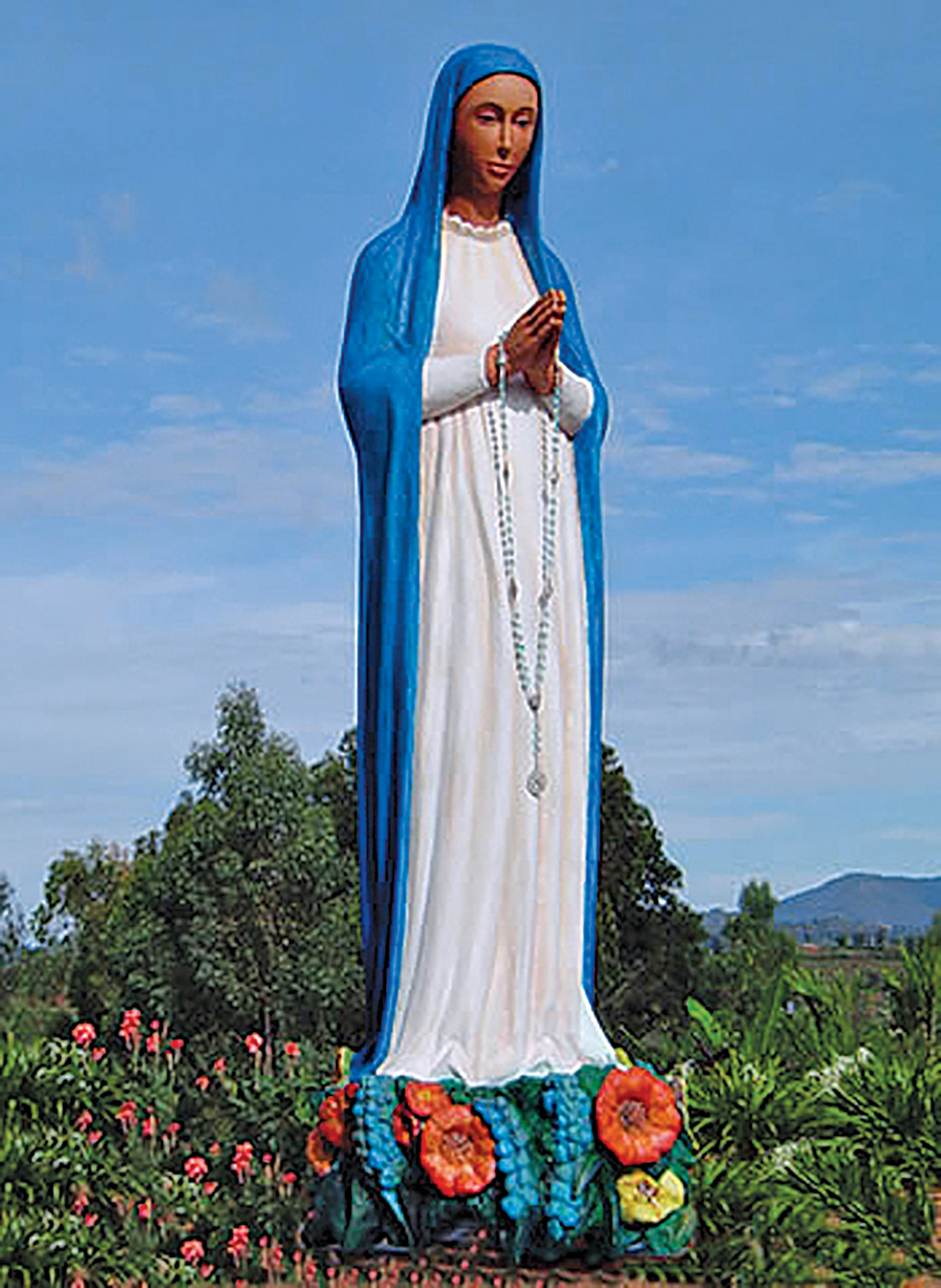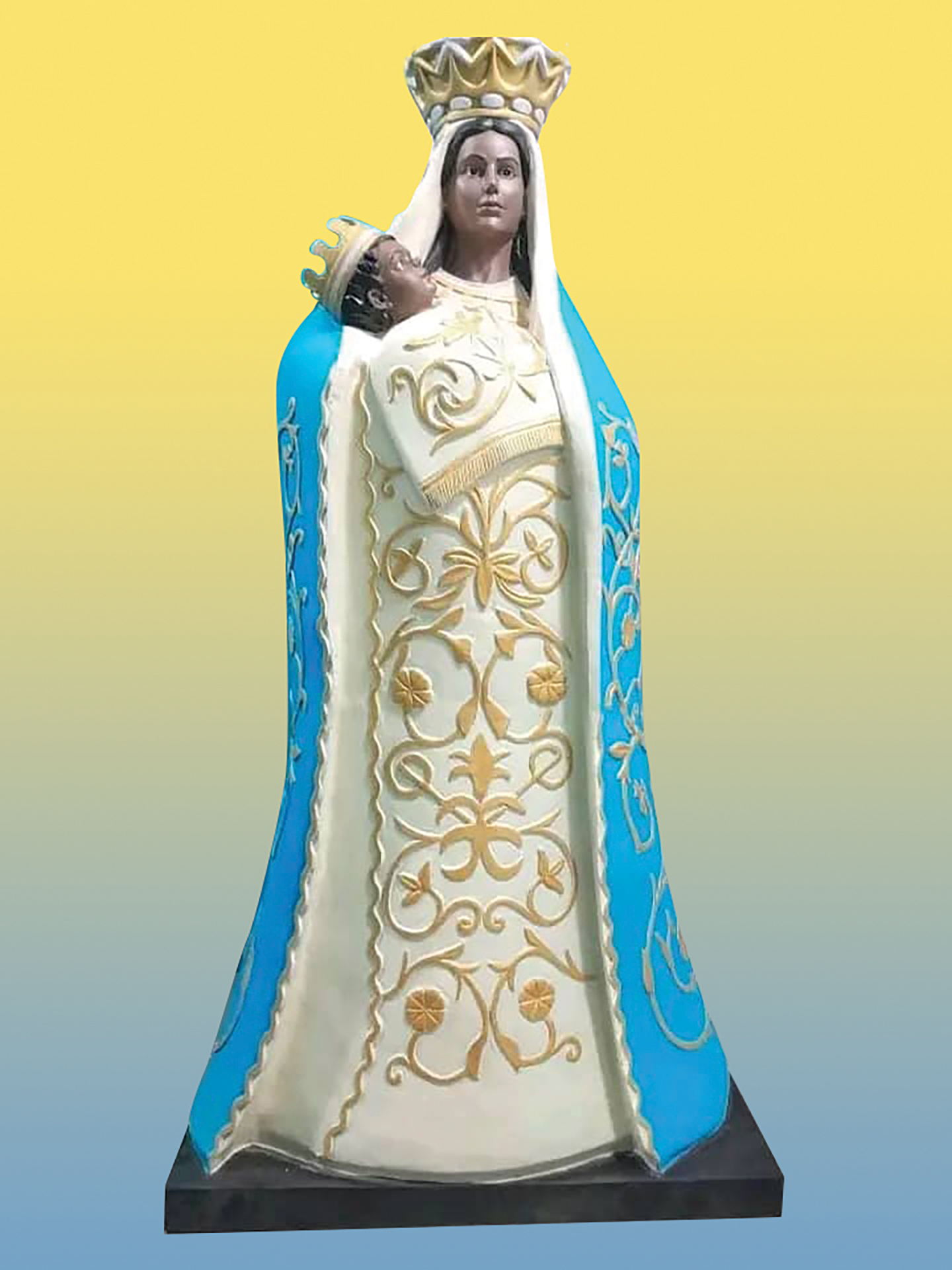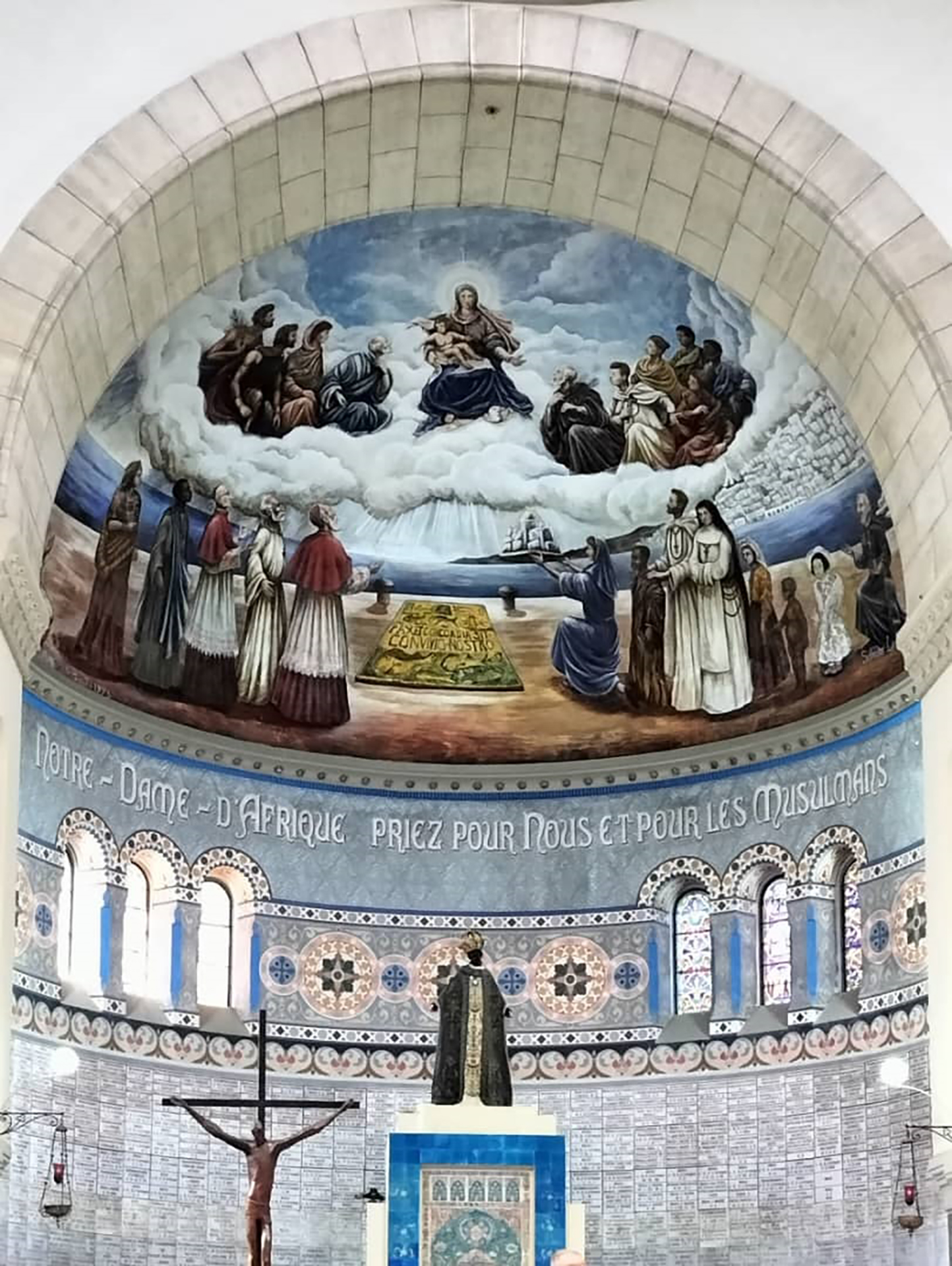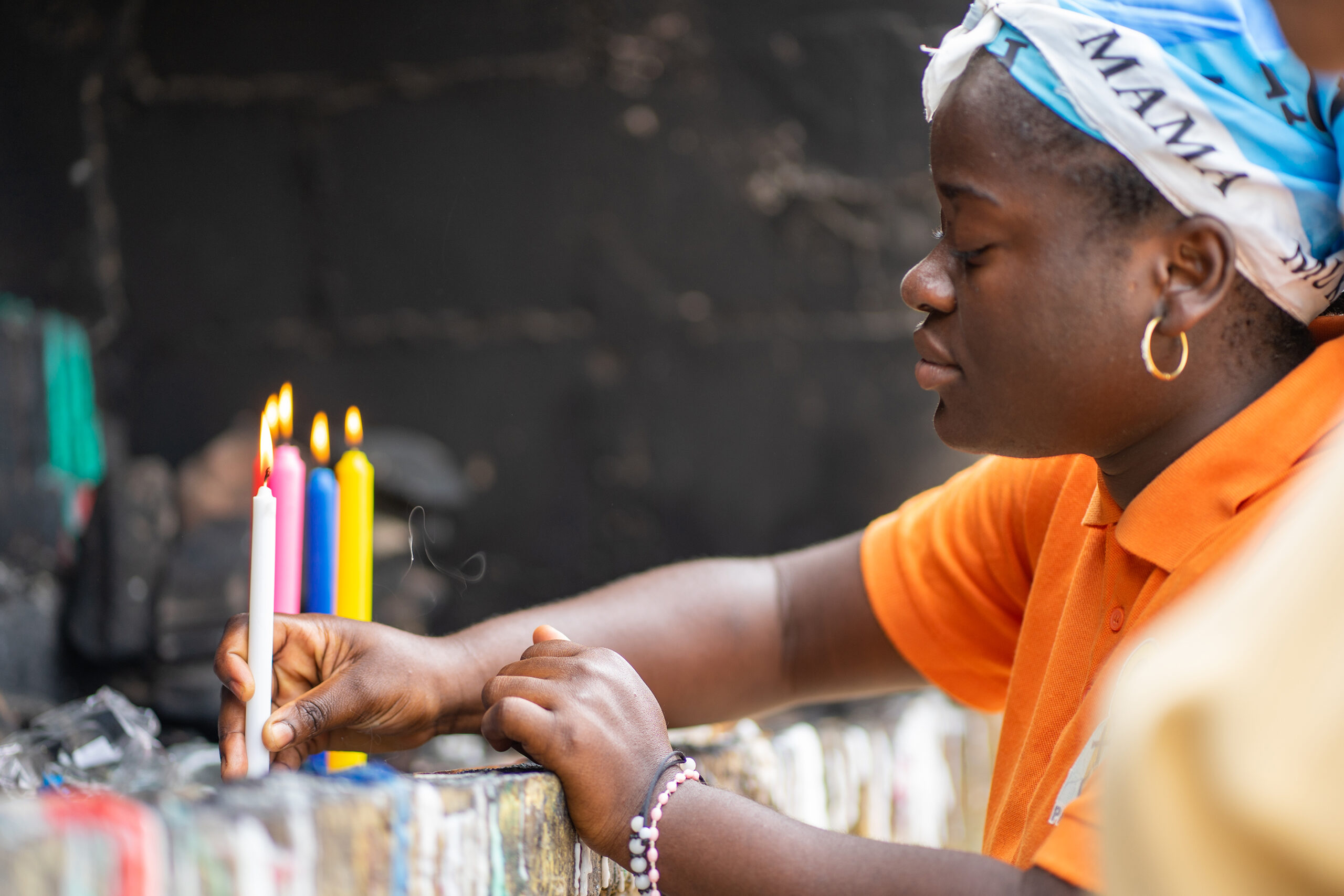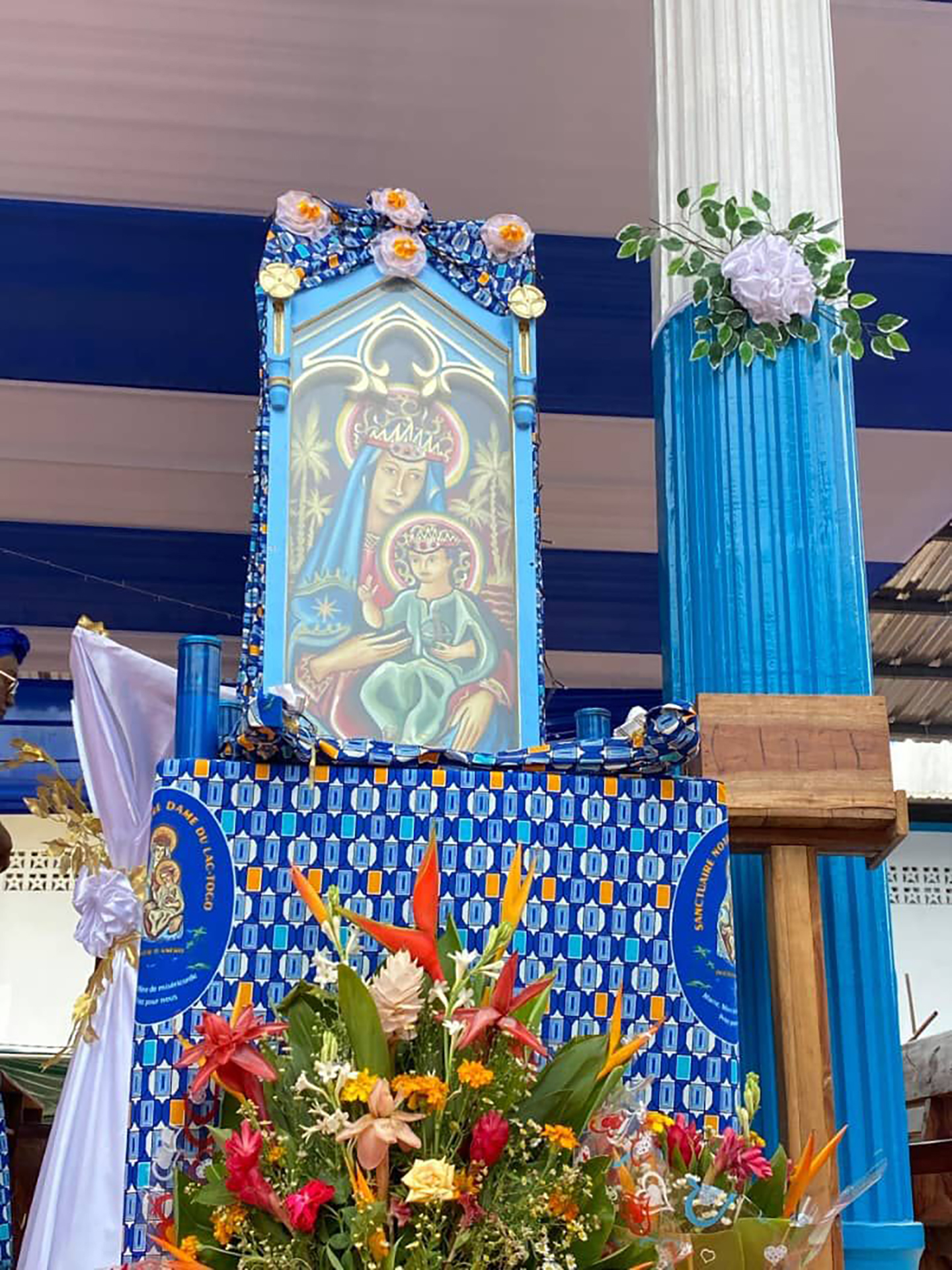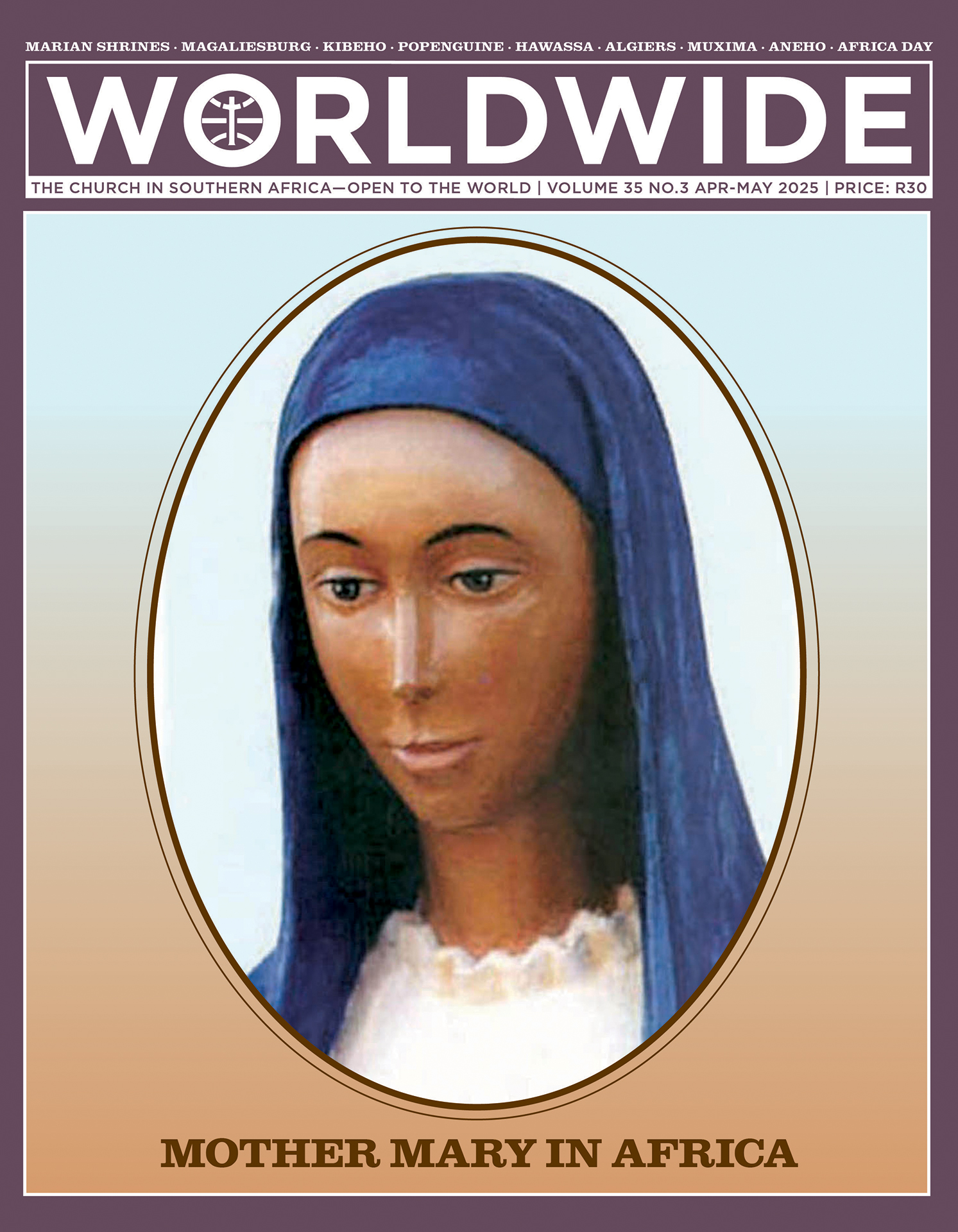
MOTHER MARY IN AFRICA
Head of the Statue of Mother Mary at Kibeho, Rwanda, carved by Marek Kowalski and based on the models of Jean Pierre Sibomana and Faustin Kayitana. In the statue, Mother Mary holds the Seven Sorrows Chaplet, a Marian devotion reintroduced to the Catholic community by Our Lady of Kibeho.
Kibeho is the only Marian apparition on African soil, officially recognized by the Church. Mother Mary’s requests for prayers preluded the 1994 Genocide.
SPECIAL REPORT • KIBEHO-RWANDA
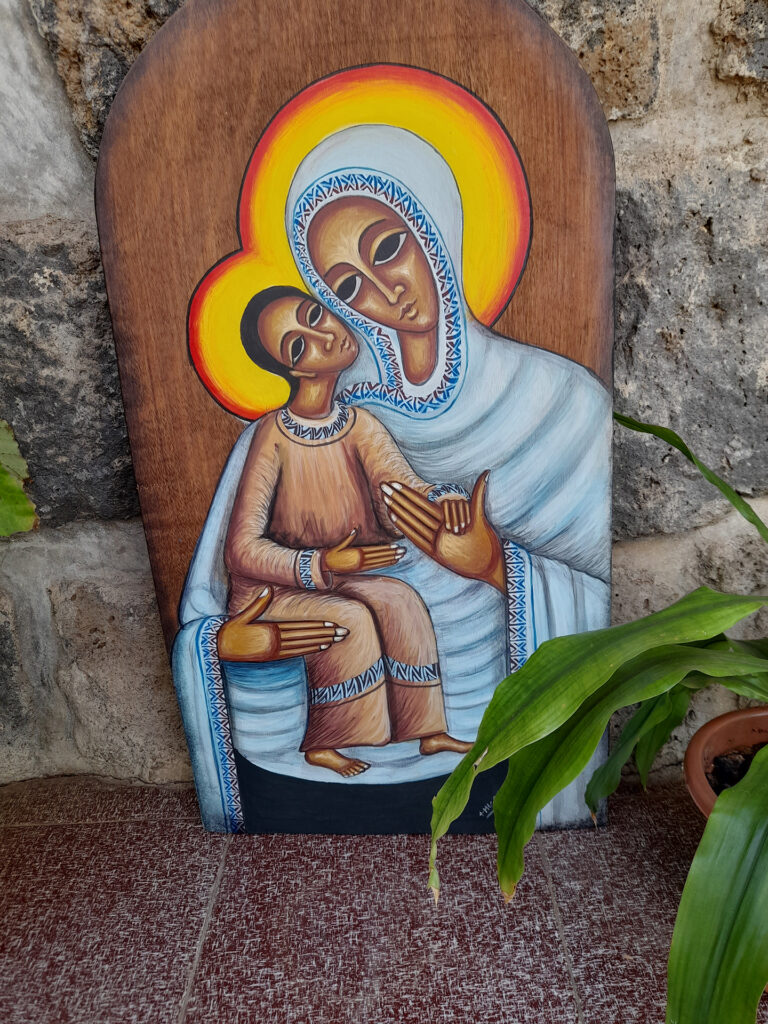
THE ADVOCATION OF OUR LADY AS COVENANT OF MERCY OR KIDANE MIHIRET
The cathedral of Hawassa in southern Ethiopia is dedicated to Mary, with the name Covenant of Mercy or Kidane Mihiret. The Apostolic Administrator of the Vicariate for the last four years writes about this advocacy of Mother Mary.
BY FR JUAN GONZÁLEZ NÚÑEZ MCCJ
I HAVE had the opportunity to experience closely the devotion of the Ethiopian people to Mary. The dedication of Hawassa cathedral to Kidane Mihiret is not a rare happening. Many other churches in Ethiopia, Catholic and Orthodox, are dedicated to this title.
Emperor Zera Yakob officially established 32 advocations of Mary with as many commemorations throughout the year.
Ethiopian devotions
In Ethiopia, there are two deeply rooted devotions: the Cross and Mary. Emperor Zera Yakob, who reigned between 1434 and 1468, and who was a great legislator in both civil and ecclesiastical matters, officially established 32 advocations of Mary with as many commemorations throughout the year. Among them, we can mention the following:
- The Assumption Our Lady or Filseta Mariam, celebrated on the 22nd of August (Nehasie 15th, according to the Ethiopian calendar). It commemorates Mary taken to Heaven by the angels.
- The Dormition of Mary or Asterio Mariam, which celebrates the transit of Mary from this earthly life. (The various translations differ as to whether Mary really died or simply fell asleep).
- Mariam Tsiyon: The metropolitan cathedral at Aksum is the mother church of the Ethiopian Orthodox Church and is dedicated to Mary of Zion. According to the Ethiopian tradition, it is the resting place of the Ark of the Covenant, stolen from the Temple of Jerusalem by Emperor Menelik I, son of Solomon and of the queen of Sheba. Mary is considered the new Ark of the Covenant.
- Our Lady at Qusqwam: Qusqwam (in Arabic Kuskam) is a village in Upper Egypt where the Holy Family is believed to have dwelt during their exile. For centuries, there was a monastery inhabited by Ethiopian monks.
- Our Lady Mary at Dabra Metmaq: This feast was introduced by Emperor Zar’a Yakob. A church in the Nile Delta was marked by an annual appearance of Our Lady within a circle of light and surrounded by angels, martyrs, and saints. When the news of the destruction of that church reached the Ethiopian court in 1437-8, Emperor Zar’a Yakob wept and ordered the construction of a church in Ethiopia dedicated to Dabra Metmaq.
- The Covenant of Mercy or Kidane Mihiret: It is celebrated on the 16th Yekatit (February 23rd). It commemorates the promise made by Christ to Mary of accepting her intercessions on behalf of anyone devoted to her. It is believed that “anyone who commemorates the feast of Our Lady Mary or even gives a drop of water in her name will be forgiven every sin.”
- Our Lady Mary as Intercessor: It is celebrated on the 21st Miyazya (April 29th). The Synaxarion, a collection of short biographies of saints, explains that when Mary intercedes with her beloved Son, she prevails upon him to forgive the sins of everyone who calls on her name. This feast is in a way an echo of that of Kidane Mihiret.
The Covenant of Mercy or Kidane Mihiret commemorates the promise made by Christ to Mary of accepting her intercessions on behalf of anyone devoted to her.
Kidane Mihiret
Among all these advocations, two of them, the Assumption (Filseta Mariam) and the Covenant of Mercy (Kidane Mihiret), are the most solemnly celebrated. Several versions appear in the ancient books about the title Kidane Mihiret, differing slightly from each other, but all agreeing on the essential point, which is that Mary and her Son made a covenant, the Covenant of Mercy, according to which Jesus would not allow eternal damnation for anyone who did something good by calling on his mother’s name.
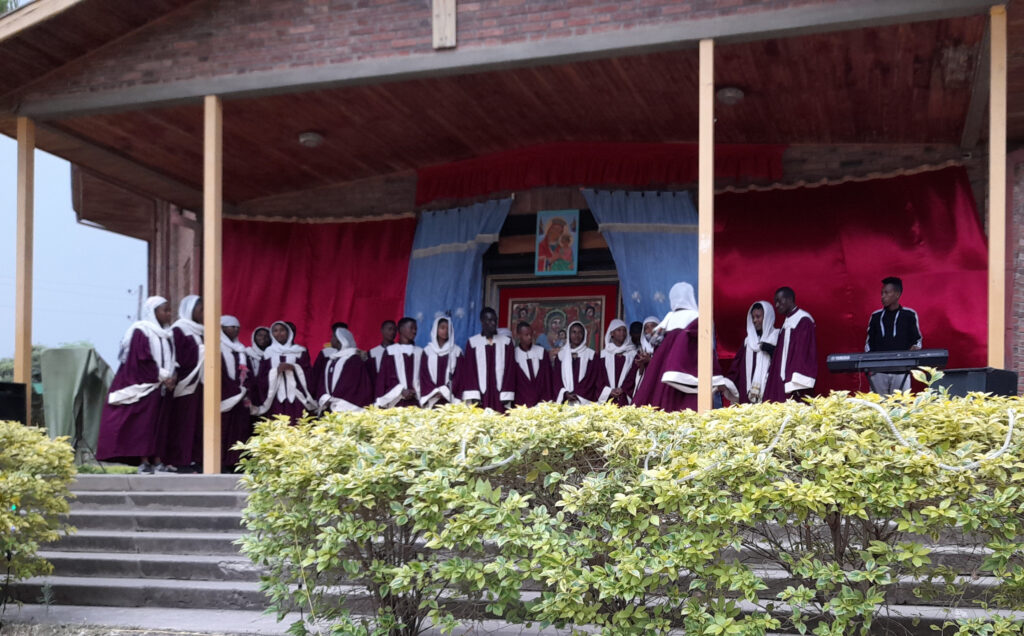
An illustrative example is the story of the “Cannibal of Kemer,” a very wicked man who was saved because on one occasion, he gave, in Mary’s name, a sip of water to a person who asked for it.
According to some accounts, Jesus asked his mother to list five of her greatest sufferings. She mentioned the following: first, the scene in the Temple, where Simeon foretold that a sword of pain would pierce her heart; second, the loss of Jesus in the Temple at the age of 12; third, the tortures the Roman soldiers inflicted on him; fourth, the crucifixion; and fifth, Jesus dead in her arms after his descent from the cross.
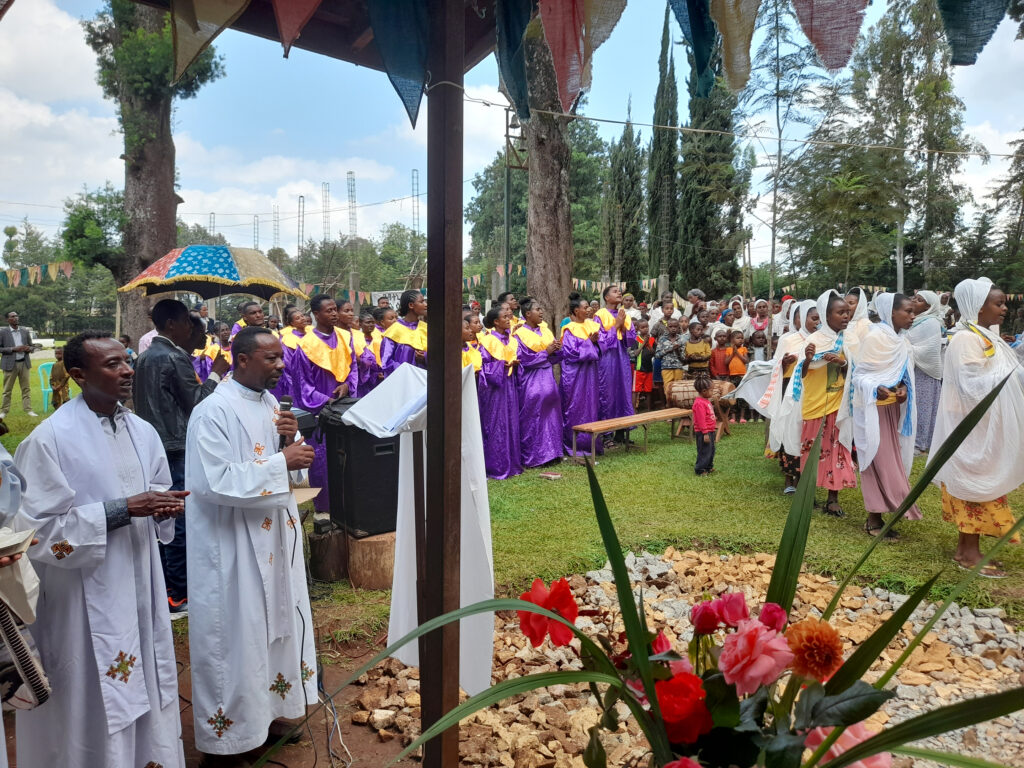
After having listened to her attentively, Jesus made her, on his own initiative, the above-mentioned promise.
Another version, however, narrates that Mary, who had been placed in the custody of John, fiercely desired to visit the tomb of Jesus, but the Jews did all they could to prevent her from doing so. Finally, the angels intervened in her favour and carried her through the air to the tomb of her Son. There they conversed at length about the sufferings of Jesus’ passion. The conversation ended with Mary’s request to her Son that those who call upon her should not be damned eternally. Jesus consented to her request.
Origin of the invocation and its artistic and devotional expressions
The invocation of Mary as intercessor is certainly not original to Ethiopia. It is found in both the Eastern and Western Churches, although Ethiopia has always added a strong local flavour in everything that incorporates its cultural baggage. In one of the earliest Ethiopian versions of the Miracles of Mary (Tammere Mariam), we discover at its roots a Greek original which was translated into Latin, and then into French; from French into Arabic and from Arabic into Ethiopian liturgical language (Ge’ez). But these versions are very free, and they incorporate many more local miracles of Our Lady.
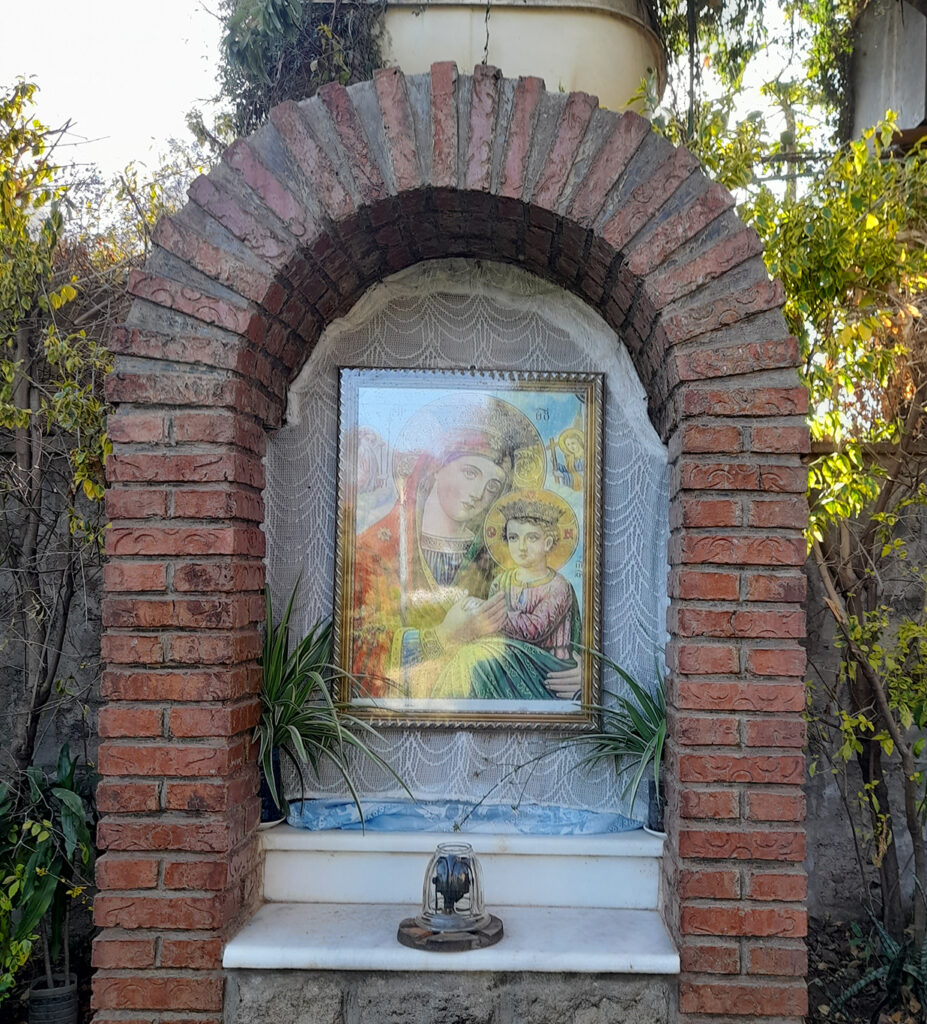
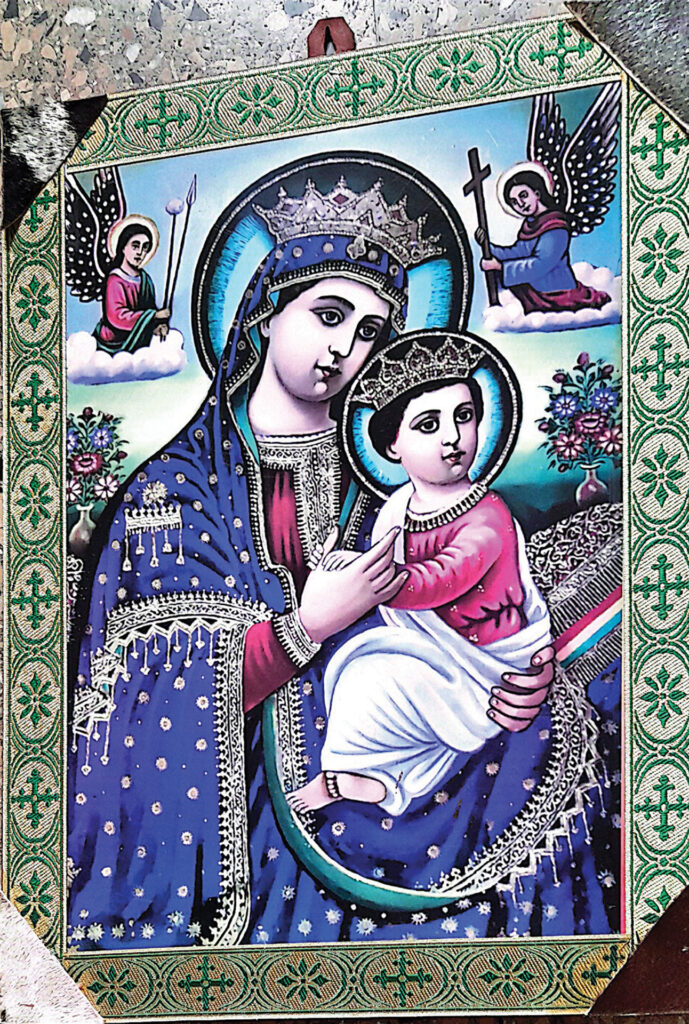
The paintings found in the churches also have a strong Ethiopian flavour, depicting miracles that occurred locally, although they also take over motifs from Byzantine paintings.
The faithful are more often seen in front of the image of Kidane Mihiret, praying through her intercession for their eternal salvation or for that of their loved ones.
Today, the typical representation of Mary under the title of Kidane Mihiret is of Byzantine origin. It depicts Mary seated and mostly holding the Child in her left arm, while with her right hand, she holds Jesus’ left hand. In some paintings, both Jesus and his mother have a crown on their heads. Their clothing may also slightly differ. Ethiopian artists follow the same Byzantine pattern but they take on, in their features, an unmistakable Ethiopian flavour, much more stylized and removed from natural anatomic forms.
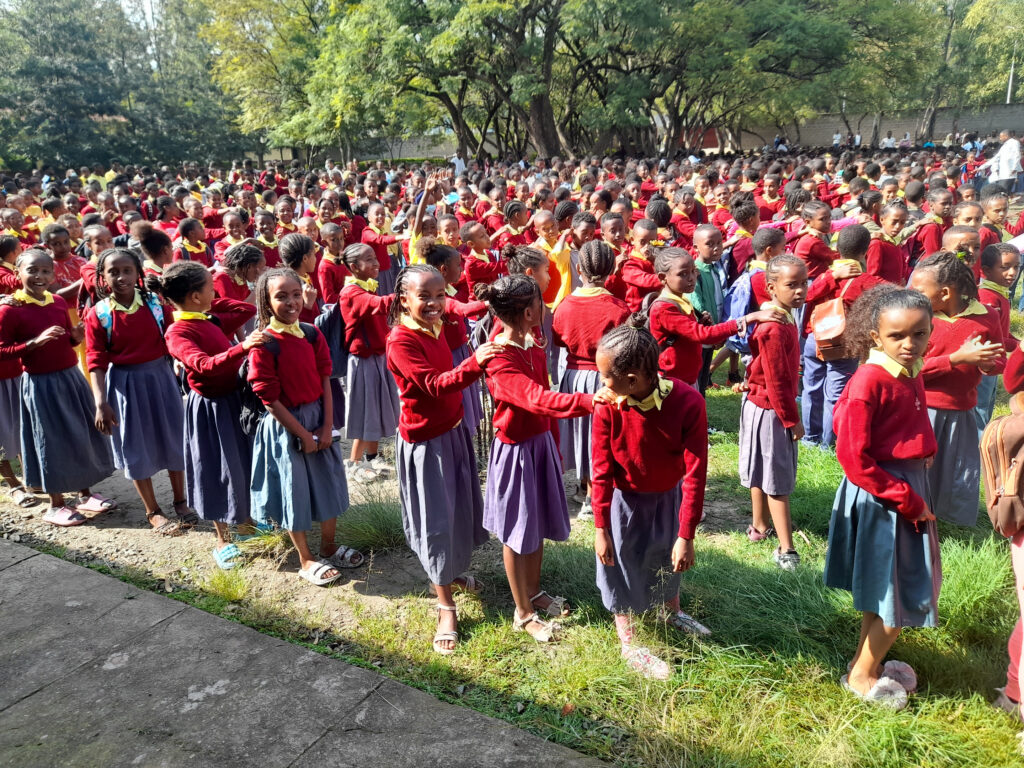
The image of Our Lady of Kidane Mihiret is almost invariably seen in Orthodox churches, not only inside the churches but also in the atriums, either attached to the wall of the main building or in a niche separate from it. It is not the only image exposed to popular devotion. It shares this devotion with the image of her Son under the title of Holy Saviour or Medhane Alem, or with the angels Gabriel and Michael. But the faithful are more often seen in front of the image of Kidane Mihiret, praying through her intercession for their eternal salvation or for that of their loved ones.

